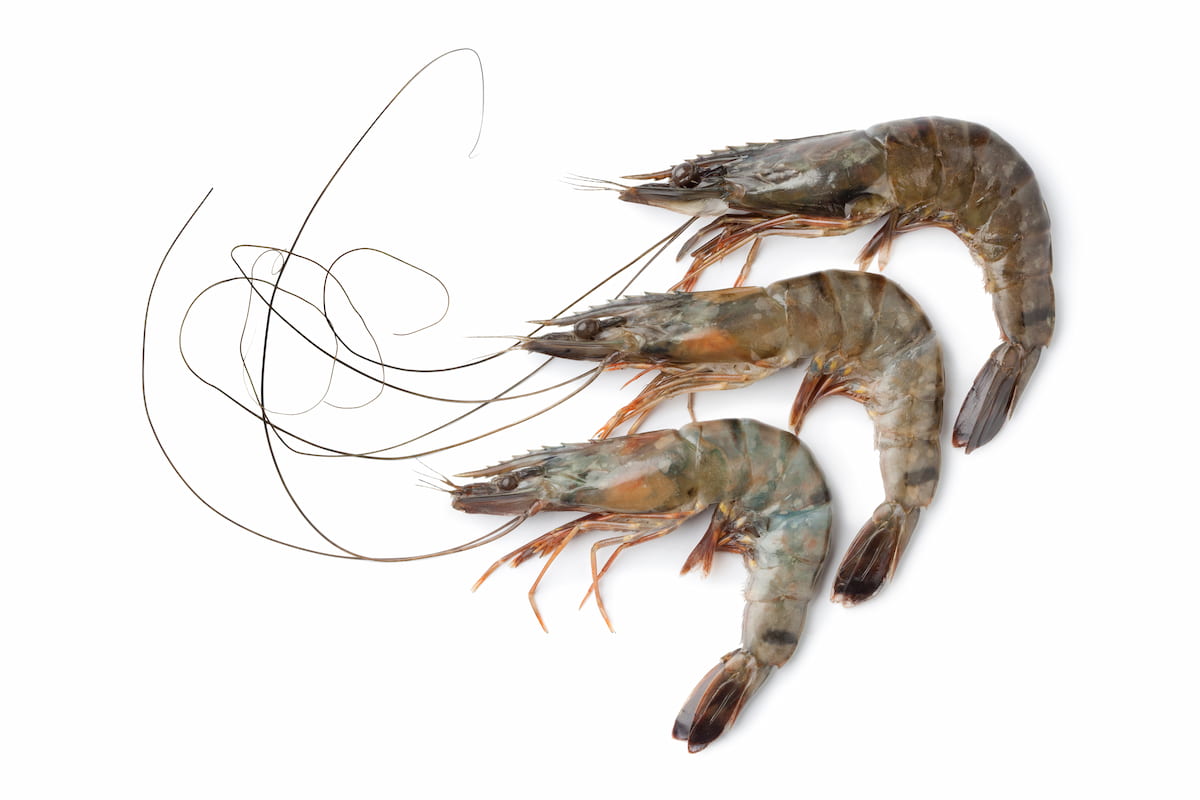Infectious Hepatopancreatic and Lymphoid Organ Necrosis (IHLN) is a viral disease that affects shrimp’s hepatopancreas and lymphoid organs. It has a high death rate and costs the aquaculture industry a lot of money. The disease is caused by small, single-stranded, non-enveloped RNA viruses called IHHNV (Infectious Hypodermal and Hematopoietic Necrosis Virus).

These viruses spread through infected shrimp or water that has been contaminated. When shrimp are infected, they get tired, lose their appetite, and their liver and pancreas change color. IHLN is thought to be one of the worst diseases for shrimp farms. Steps have been taken to stop it from spreading, like using shrimp without certain pathogens, improving biosecurity, and finding it early.
Infectious Hepatopancreatic and Lymphoid Organ Necrosis in Shrimp (Prawn)
The Pathogen Responsible for Infectious Hepatopancreatic and Lymphoid Organ Necrosis (IHLN)
- The pathogen responsible for Infectious Hepatopancreatic and Lymphoid Organ Necrosis (IHLN) in shrimp is a group of small, non-enveloped, single-stranded RNA viruses called Infectious Hypodermal and Hematopoietic Necrosis Virus (IHHNV).
- This virus is the primary cause of the disease, which affects the hepatopancreas and lymphoid organs of shrimp, causing significant mortality rates and economic losses.
- The disease predominantly affects the Tiger Shrimp species, scientifically known as Penaeus monodon. IHLN is considered a major threat to shrimp aquaculture, and efforts are being made to control its spread through various measures such as early detection methods, improved biosecurity, and specific pathogen-free shrimp.
Spread and Transmission of Infectious Hepatopancreatic and Lymphoid Organ Necrosis (IHLN) in Shrimp
- Shrimp often get Infectious Hepatopancreatic and Lymphoid Necrosis (IHLN) through other diseased shrimp or contaminated water.
- IHHNV, the causative agent of the disease, infects and replicates within the hepatopancreas of shrimp, causing tissue destruction and organ failure.
- The virus is released into the water and can infect other shrimp that swim through it. Furthermore, the illness can be passed on from sick mother shrimp to their young, a process is known as vertical transmission.
- Disinfecting tanks and equipment, instituting biosecurity rules, and selecting pathogen-free shrimp are all viable options for halting the spread of IHLN.
What are the Signs and Symptoms of Infectious Hepatopancreatic and Lymphoid Organ Necrosis (IHLN) in Shrimp
- Light pinkish to yellowish discoloration of the cephalothorax region.
- Fouling by ciliate protozoa such as Zoothamnium.
- Highly decayed (necrotic) and blackened (melanized) hepatopancreas.
- Association with secondary bacterial infections such as Vibrio alginolyticus.
- Lethargy and anorexia in affected shrimp.
- High mortality rates, especially in post-larvae and juvenile stages.
- Reduced growth and development in surviving shrimp.
In case you missed it: Yellow-head Disease Management in Shrimp (Prawn): Symptoms, Causes, Diagnosis, Treatment, Control, and Prevention

The shrimp’s hepatopancreas, important for digestion and immunity, has been damaged and turned into necrotic tissue. It is what is causing these symptoms. A change in the color of the skin around the head and chest is often a sign of organ failure. Because the immune system is weak and the organ is damaged, infected shrimp often get second-bacterial infections. With early detection tools and better biosecurity practices, stopping or slowing the spread of IHLN in shrimp farms is possible.
Diagnosis of Infectious Hepatopancreatic and Lymphoid Organ Necrosis (IHLN) in Shrimp
- An early diagnosis is made based on clinical symptoms and signs.
- Confirmation through histopathological examination of the hepatopancreas and lymphoid organ.
- Multifocal necrosis of the hepatopancreas marked by haemocytic infiltration and encapsulation resulting in melanization.
- Presence of densely stained globular basophilic bodies resembling viral inclusions in the tubular epithelium and interstitial cells of the hepatopancreas.
- Marked necrosis and degeneration of stromal matrix cells in the lymphoid organ.
- Normal hemocytes in the lymphoid organ.
- Absence of pathological signs in the gills.
The most accurate approach for diagnosing IHLN in shrimp is histopathological examination. Other diagnostic approaches include PCR-based IHHNV detection and ELISA-based IHHNV antibody detection. Early identification and proper diagnosis of IHLN can aid in preventing and managing disease transmission in shrimp farms.
Treatment of Infectious Hepatopancreatic and Lymphoid Organ Necrosis (IHLN) in Shrimp
There is currently no known effective treatment for Infectious Hepatopancreatic and Lymphoid Organ Necrosis (IHLN) in shrimp, and management efforts should focus on prevention and control strategies.
Prevention and Control of Infectious Hepatopancreatic and Lymphoid Organ Necrosis (IHLN) in Shrimp
- Maintaining the physicochemical conditions of the pond environment within acceptable levels, as elevated levels of certain parameters such as total suspended solids, chemical oxygen demand, biochemical oxygen demand, and free ammonia can contribute to the outbreak of the disease.
- Practicing good biosecurity measures, such as preventing the entry of contaminated water from feeder canals, limits the spread of bacterial and viral pathogens.
- Implement closed culture systems to prevent the introduction of external pathogens and better control the pond environment.
- Regularly monitoring and testing for the presence of viral and bacterial pathogens, as well as water quality parameters, to detect and manage the outbreak of the disease early on.
- Vaccination of shrimp against IHLN can also be considered a prevention strategy.
By maintaining a healthy pond environment and practicing good biosecurity measures, shrimp farmers can prevent and control the outbreak of IHLN, leading to a more sustainable and profitable shrimp farming industry.
In case you missed it: White Spot Disease Management in Shrimp (Prawn): Symptoms, Causes, Diagnosis, Treatment, Control, and Prevention

Conclusion
Infectious Hepatopancreatic and Lymphoid Organ Necrosis (IHLN) is a serious disease that has a considerable impact on the shrimp farming sector. The disease is caused largely by a viral virus, although secondary bacterial infection and environmental deterioration can contribute to mass shrimp death. Histopathological investigation can confirm the diagnosis of IHLN, and there is presently no known effective therapy for the condition.
Maintaining a healthy pond habitat, implementing strong biosecurity measures, and conducting frequent monitoring can all assist in avoiding and controlling an epidemic of IHLN. Closed culture methods, as well as shrimp immunization, can be effective preventative techniques. A proactive and long-term strategy for IHLN management can help assure a viable and long-term shrimp farming enterprise.
- Beneficial Insects in Pest Management
- Natural Solutions for Pest Control in Flower Gardens
- Types of Fungicides Used in Agriculture
- Common Issues in the Fruit Development Stage of Pomegranate Farming
- Fruit Development Issues in Papaya: Easy Solutions and Treatment
- Soil-Borne Diseases and How to Protect Your Plants
- Practices to Prevent Disease Spread in the Garden
- From Wilted to Thriving: How to Treat Root Rot Naturally in Houseplants
- Natural Remedies to Cure Brown Spots on Fig Tree Leaves